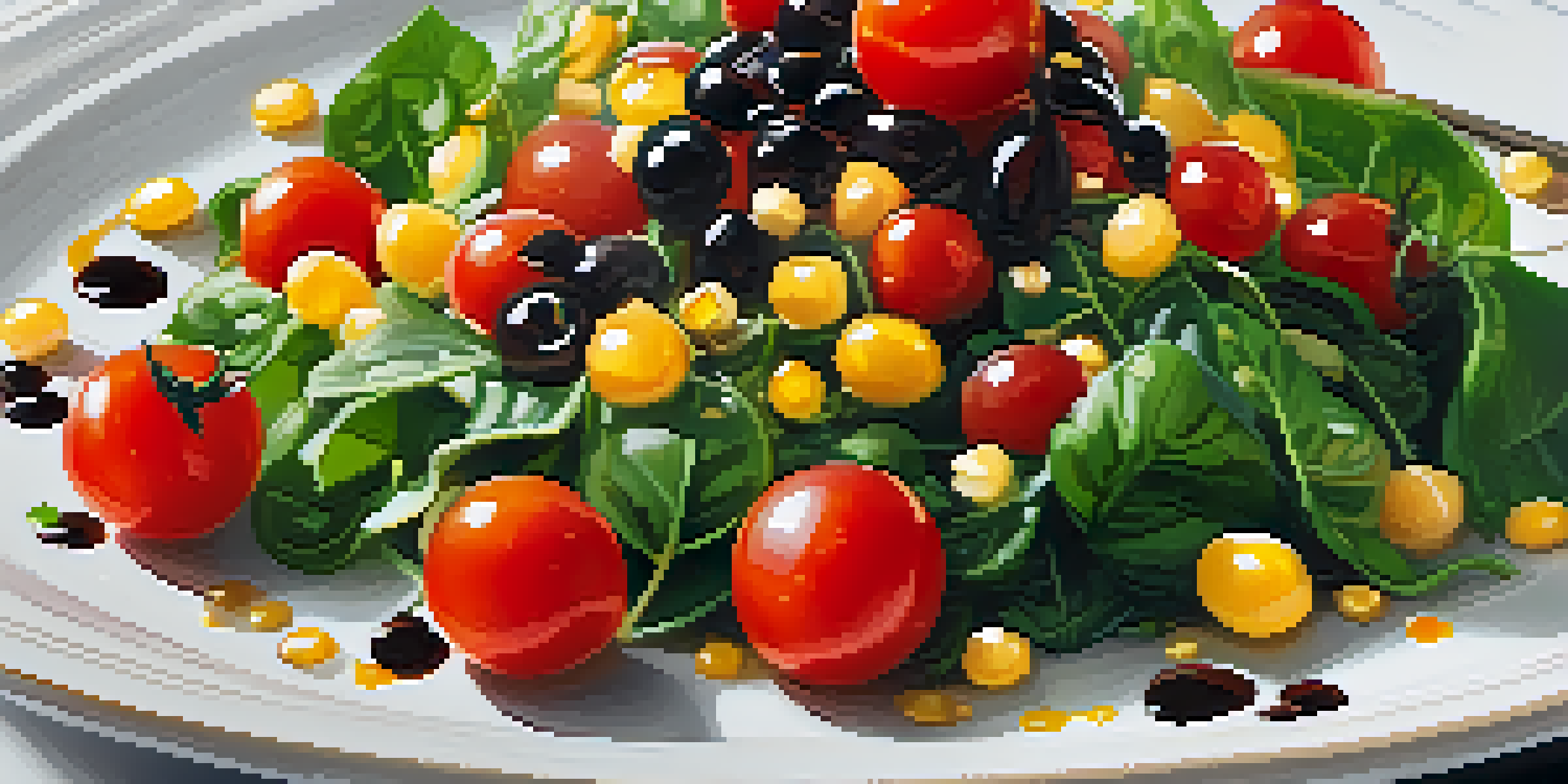Food as Canvas: Artistic Techniques in Culinary Presentation

Introduction: The Art of Culinary Presentation
Culinary presentation is more than just how food looks on a plate; it's an art form. Just like a painter uses a canvas, chefs use plates to create edible masterpieces. When food is beautifully presented, it tantalizes the eyes and enhances the overall dining experience. This article will explore various artistic techniques that chefs employ to transform meals into stunning visual displays.
Color Theory: The Palette of Culinary Art
Color plays a vital role in food presentation, much like an artist’s palette. Chefs often choose ingredients based on their colors to create vibrant dishes that catch the eye. For example, a salad with bright red tomatoes, deep green spinach, and golden corn not only looks appealing but also invites diners to enjoy the flavors. By understanding color combinations, culinary artists can evoke feelings and enhance the overall appeal of their creations.
Culinary Presentation as Art
Culinary presentation transforms food into visual masterpieces, enhancing the overall dining experience.
Plating Techniques: Sculpting with Food
Plating is where the magic happens, turning a simple meal into an artistic display. Techniques like stacking, layering, and using negative space can drastically change how food is perceived. For instance, a well-stacked tower of ingredients can create a sense of height and elegance. Chefs often use tools like squeeze bottles or tweezers to achieve precision in their presentations, making each plate a unique work of art.
Textures: The Tactile Experience of Food
Texture adds another layer of intrigue to culinary art, engaging more than just the visual senses. Chefs combine various textures, such as crispy, creamy, and crunchy, to create a delightful experience. Imagine biting into a silky mousse topped with a crisp caramel shard; it’s a symphony of sensations. This interplay of textures not only enhances the taste but also makes the dish more memorable.
Importance of Color and Texture
Color and texture play crucial roles in food presentation, engaging the senses and making dishes more memorable.
Garnishing: The Finishing Touch
Garnishes are like the final brush strokes on a painting; they complete the masterpiece. Fresh herbs, edible flowers, or a drizzle of sauce can elevate a dish from ordinary to extraordinary. For example, a sprinkle of microgreens can add freshness, while a swirl of balsamic reduction can introduce a touch of elegance. Thoughtful garnishing can also provide a hint about the dish’s flavor profile, sparking curiosity in diners.
Cultural Influences: A Global Palette
Culinary presentation is deeply influenced by cultural backgrounds, offering a rich tapestry of styles. Different cuisines bring unique artistry to the table, from the intricate sushi of Japan to the colorful tapas of Spain. Each culture has its own techniques and philosophies regarding food presentation, reflecting their history and values. Exploring these influences can inspire chefs to blend techniques and create innovative dishes that honor tradition while embracing creativity.
Cultural Influences on Presentation
Different cultures contribute unique styles and techniques to culinary presentation, inspiring creativity and innovation in the kitchen.
Trends in Culinary Presentation: Evolution of Style
The world of culinary presentation is ever-evolving, with trends constantly reshaping how food is served. Minimalism, for example, has gained popularity, focusing on simplicity and clean lines to highlight the ingredients. Alternatively, some chefs embrace maximalism, where bold colors and extravagant designs take center stage. Staying attuned to these trends can help chefs innovate and keep their presentations fresh and exciting.
Conclusion: The Impact of Presentation on Dining
In conclusion, the art of culinary presentation is a vital component of the dining experience. It engages the senses, sparks joy, and enhances the flavors of the food. Chefs who master artistic techniques in presentation not only create beautiful plates but also forge memorable experiences for their guests. As we continue to appreciate food as both nourishment and art, the possibilities for creativity in culinary presentation are endless.